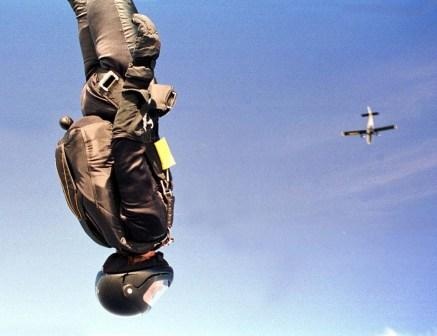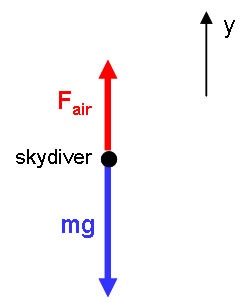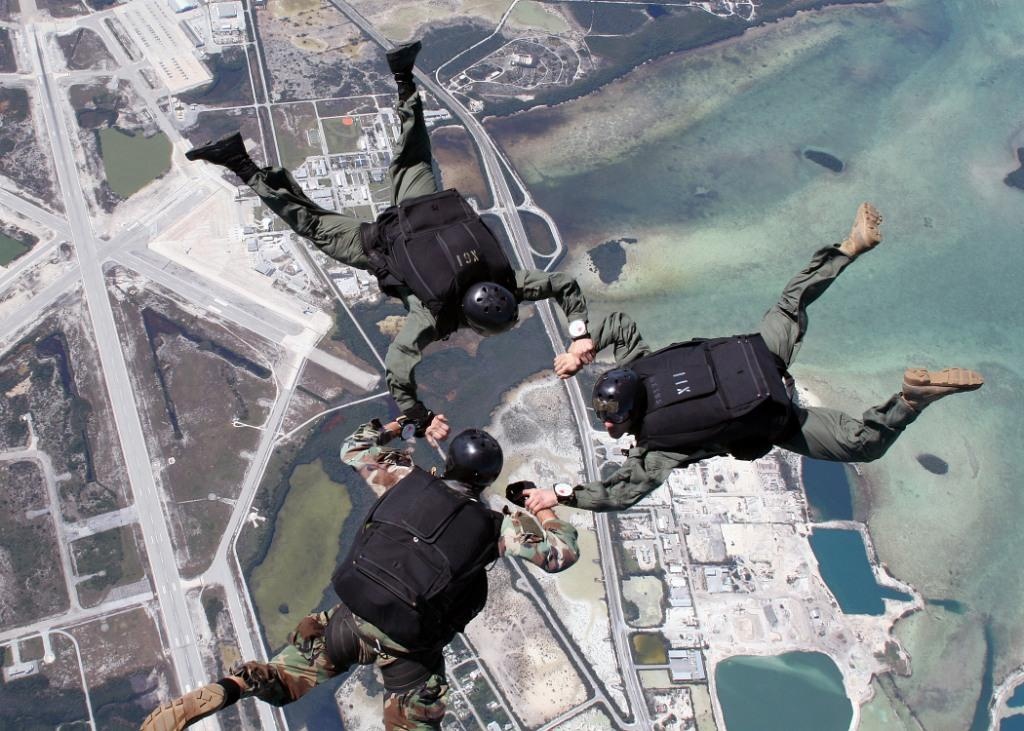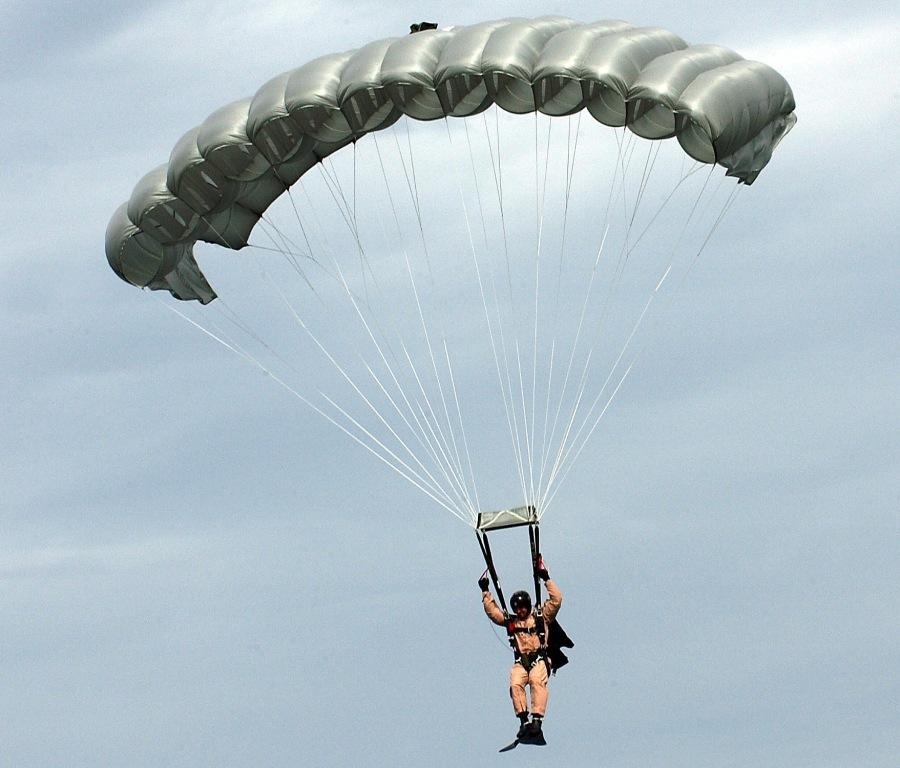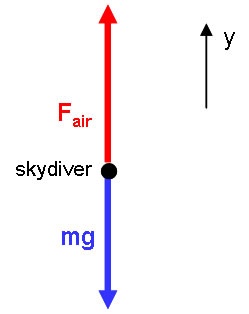Part A
Photo by Cpl. Sean Capogreco courtesy U.S. Army |
In the photo above, Sgt. 1st Class Cheryl Stearns of the U.S. Army's Golden Knights parachute team demonstrates how to maximize acceleration during a skydive. Suppose that a 75 kg skydiver was using this technique. If the skydiver's current acceleration is 2.0 m/s2 toward the ground, what is the force of air resistance acting on the skydiver?
Solution
System:
The skydiver will be treated as a point particle.
Interactions:
External influences from the earth (gravity) and the air.
Model:
Approach:
Diagrammatic Representation
The free body diagram for this situation is:
When drawing a free body diagram for an object moving vertically under the influence of gravity and some other force(s), it is important to try to decide whether gravity is "winning" over the other force(s) or not. In this case, we know that the skydiver is accelerating toward the ground, so we expect that the force of gravity is larger than the force of air resistance. If you can come to such a conclusion, it is a good idea to represent it in your free body diagram.
Mathematical Representation
The x-direction is unimportant in this problem, so we write only the y-component equation of Newton's Second Law:

This equation has only one unknown, so we can solve for Fair.

This problem illustrates the importance of choosing a coordinate system. Only by explicitly choosing the y-direction (as we did in the free body diagram) will you remind yourself that the acceleration is downward, and so an appropriate sign must be applied. In our case, because we chose the positive y-direction to be upward, the acceleration must be negative.
As we predicted in the note above, the force of air resistance is smaller than the force of gravity on the skydiver in this case.
Part B
Photo by Shane Hollar courtesy U.S. Navy. |
If they dive far enough, even without parachutes, skydivers will reach a constant velocity known as terminal velocity. Suppose that a 75 kg skydiver is falling at a constant velocity of 55 m/s toward the ground. What is the force of air resistance acting on the skydiver?
Solution
System:
The skydiver will be treated as a point particle.
Interactions:
External influences from the earth (gravity) and the air.
Model:
Approach:
Diagrammatic Representation
The free body diagram for this situation is:
Once again, we can use cues from the problem to decide whether gravity is "winning" over the other force(s) or not. In this case, we know that the skydiver is moving at constant speed, so we expect that the force of gravity is precisely balanced by the force of air resistance.
Mathematical Representation
The x-direction is unimportant in this problem, so we write only the y-component equation of Newton's Second Law:

Now, since the problem tells us the skydiver is falling with a constant velocity, we know that the y-accleration is zero. Cancelling the may term, we can solve for Fair:

The speed of the skydiver is irrelevant to this problem. As long as the acceleration is zero, the forces balance.
Part C
Photo by Mass Communication Specialist 2nd Class Christopher Stephens courtesy U.S. Navy. |
Immediately after opening the parachute, the skydiver will begin to decelerate. The parachute has effectively increased the skydiver's air resistance, which lowers the terminal velocity. Suppose that a 75 kg skydiver has recently pulled the rip cord and is currently decelerating at 2.0 m/s2. What is the force of air resistance acting on the skydiver (including parachute)?
Solution
System:
The skydiver and parachute will be treated as a single point particle.
Interactions:
External influences from the earth (gravity) and the air.
Model:
Approach:
Diagrammatic Representation
The free body diagram for this situation is:
Again, we try to decide whether gravity is "winning" over the other force(s) or not. In this case, we know that the skydiver's deceleration is equivalent to an upward acceleration. Thus, we expect that the (downward) force of gravity is less than the (upward) force of air resistance in this case.
Mathematical Representation
The x-direction is unimportant in this problem, so we write only the y-component equation of Newton's Second Law:

This equation has only one unknown, so we can solve for Fair.

Again, it is important to consider your coordinate system. It is common to consider a deceleration to correspond to a negative acceleration. In this case, however, because the skydiver is moving in the negative direction, the deceleration corresponds to a positive (upward) acceleration in our coordinate system.
As we predicted in the note above, the force of air resistance is larger than the force of gravity on the skydiver in this case.
